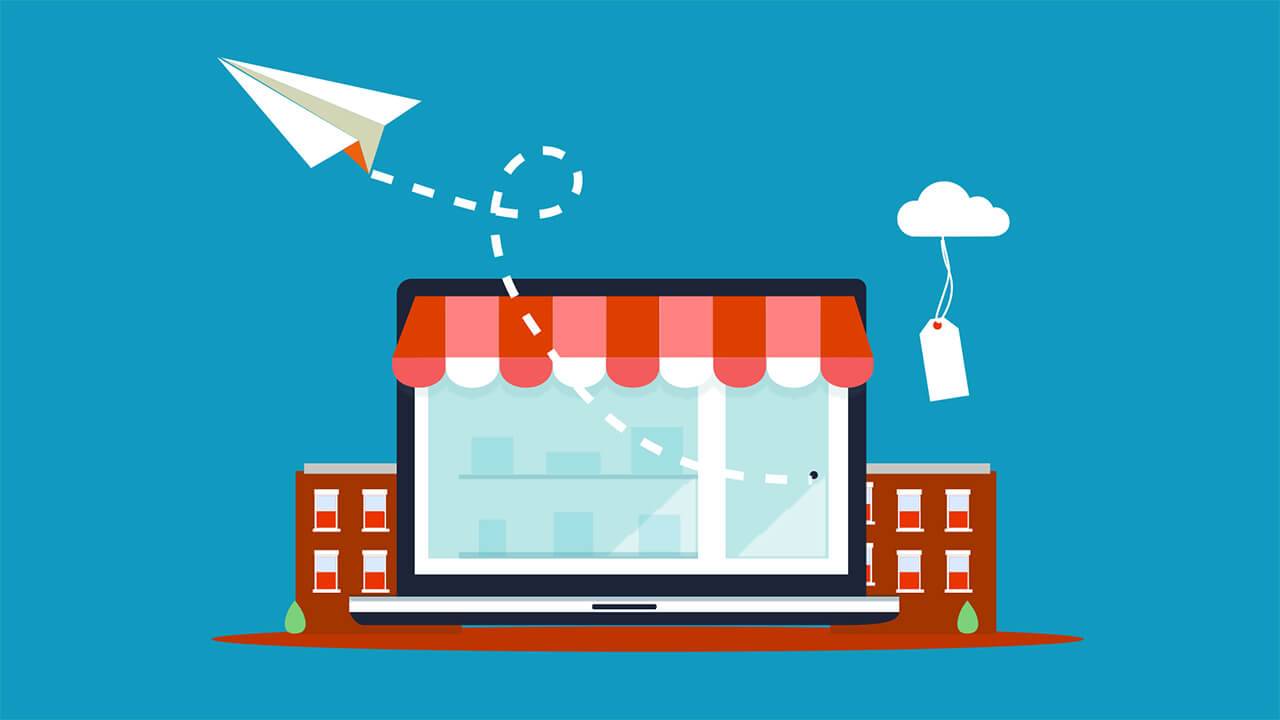6 Things to Consider When Starting an Online eCommerce Store

There’s never been a better time to start your own e-commerce store. According to Digital Commerce 360, online sales grew by 44 percent from 2019 to 2020. The e-commerce train isn’t losing steam, either. As consumer shopping habits continue to shift from brick and mortar to online, it will maintain its momentum. For a successful e-commerce store, though, there are several things you’ll need to consider.
1) Selling Method
How do you intend to sell products on your e-commerce store? There are two primary selling methods: direct and dropshipping. Both methods allow you to list and sell products on your e-commerce store. The difference is that direct selling requires stocking inventory and fulfilling orders, whereas dropshipping does not.
Dropshipping is an alternative selling method in which you partner with a product supplier. Customers will still be able to purchase the products on your e-commerce store, but the supplier will fulfill their orders. When a customer places an order, the supplier will package and ship his or her purchased products.
Dropshipping is easier and, in some cases, cheaper than direct selling. With that said, direct selling gives you greater control over your e-commerce store’s supply chain while simultaneously reducing competition. Assuming this is your first attempt at launching an e-commerce store, you may want to choose dropshipping. If you’re familiar with inventory stocking and product fulfillment, though, direct selling may be the better option.
2) CMS
You’ll have to choose a content management system (CMS) for your e-commerce store. Nearly all e-commerce stores are powered by a CMS. A CMS is a software package that allows you to build and manage a dynamic website, including an e-commerce store, from a web browser. Instead of downloading and reuploading a page, you can edit by logging in to the CMS from a web browser.
E-commerce stores, of course, require certain features that aren’t needed by other websites. They typically need product categories, for example, and they need a checkout system. If a CMS doesn’t offer these features, you should look elsewhere.
Some of the top CMSs for e-commerce stores include:
- WordPress with WooCommerce
- Shopify
- BigCommerce
- Magento
- Wix
- Squarespace
- OpenCart
- PrestaShop
3) Payment Processing
Something else to consider when creating an e-commerce store is payment processing. When customers place an order, you’ll have to process their payments. Both direct selling and dropshipping require payment processing, which is handled by a third-party financial institution known as a payment processor. The payment processor will essentially relay money from your customers’ bank accounts to your bank account.
There are dozens of different payment processors. While they all facilitate payments between your online store and its customers, some of them are better than others. Fees, of course, can vary depending on the payment processor. Some payment processors also support integration with common e-commerce CMSs.
4) Design

Don’t underestimate the importance of an attractive design for your e-commerce store. An attractive and easy-to-use design will result in higher engagement. Shoppers will be more active and engaged while visiting your e-commerce store. With an attractive and easy-to-use design, they’ll view more products, click more clicks and add more products to their carts.
Fortunately, customizing your e-commerce store’s design is easy if you use the right CMS. Many CMSs support themes. To change your e-commerce store’s design, you can use a different theme. You can then customize the theme so that it’s entirely unique and distinguished from that of your competitors’ stores.
5) Marketing
When creating an e-commerce store, you should consider a digital marketing agency. In other words, how do you plan on promoting your e-commerce store? Marketing is essential for attracting shoppers. Without marketing, shoppers won’t know that it exists, let alone buy its products. Marketing is all about raising awareness for your e-commerce store’s brand so that more shoppers visit it.
There are free and paid marketing tactics. Search engine optimization (SEO) is a free marketing tactic. You can perform SEO to earn higher search rankings without spending any money. Pay-per-click (PPC), on the other hand, is a paid marketing tactic. With PPC, you can create ads for networks such as Google, Bing or Facebook while paying a small fee per each ad click. By marketing your e-commerce store, more shoppers will visit and buy its products.
6) Security
Lastly, you should consider security when creating an e-commerce store. Like with any online business, operating an e-commerce store involves the collection of data. You’ll probably collect information about your store’s customers, such as their names, email addresses, home addresses and phone numbers. To prevent this data from falling into the wrong hands, you must strengthen your e-commerce store’s security.
Using the encryption-based Hypertext Transfer Protocol Secure (HTTPS) will make your e-commerce store more secure. HTTPS is a secure extension of its Hypertext Transfer Protocol (HTTP) counterpart. If your e-commerce store uses HTTPS, all the data sent to and received by its shoppers will be encrypted.
For your e-commerce store’s CMS, choosing a strong password can improve its security. A study conducted by Verizon found that four in five data breaches stem from weak passwords. If you choose a short or otherwise weak password for your e-commerce store’s CMS, it may open the doors to a data breach. A hacker may be able to log in to your e-commerce store’s CMS, after which he or she may access protected data.
Along with choosing a strong password, you can use multi-factor authentication (MFA) to make your e-commerce more store. MFA is a security solution for logins, including CMS logins. When enabled, it will require you to enter a one-time PIN that’s sent to your email address or mobile device. Even if a hacker has guessed your password, your e-commerce store will remain protected with MFA.
Not all e-commerce stores are successful. According to Tech.co, the failure rate for e-commerce stores is about 80 percent, meaning only one in five will survive. Fortunately, most instances of failure can be avoided by planning ahead. With the right approach, your e-commerce store will not only survive; it will thrive.










